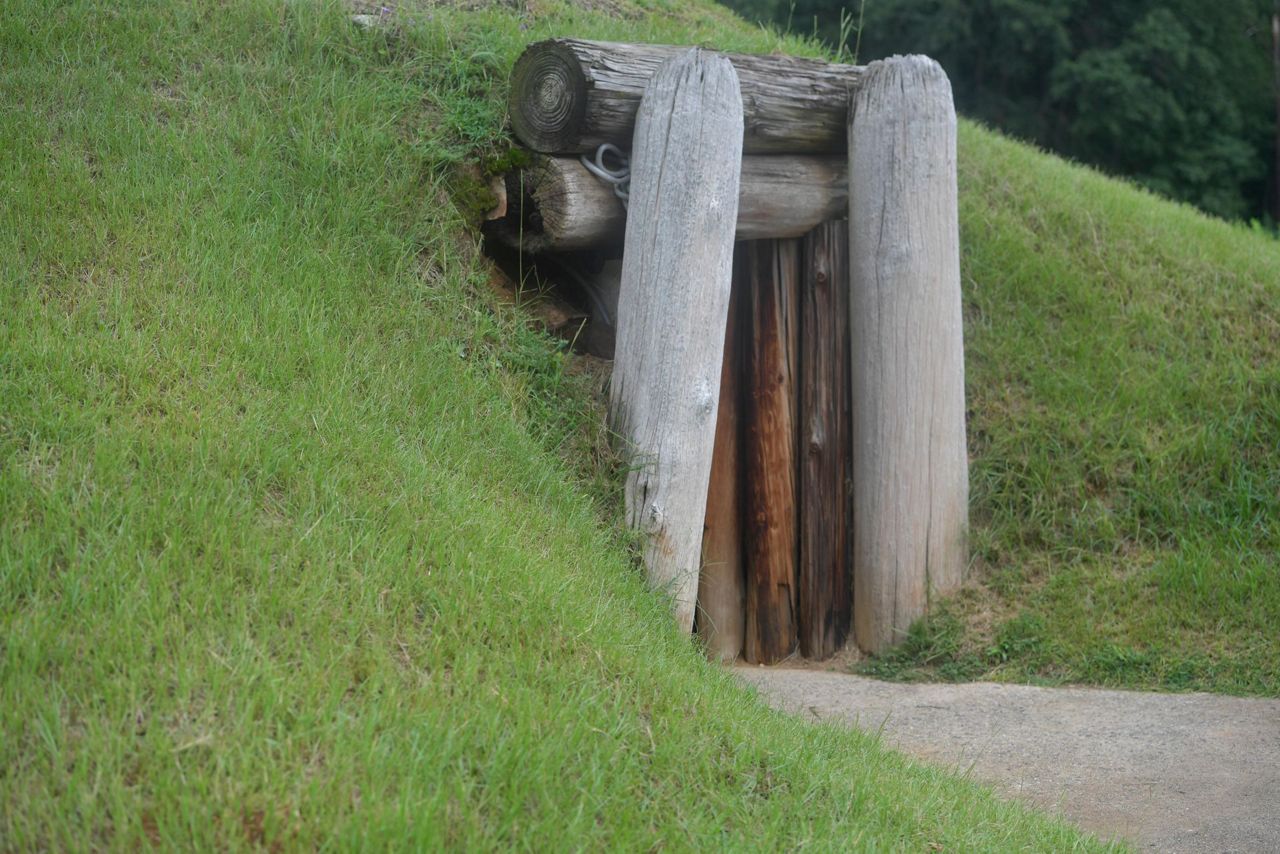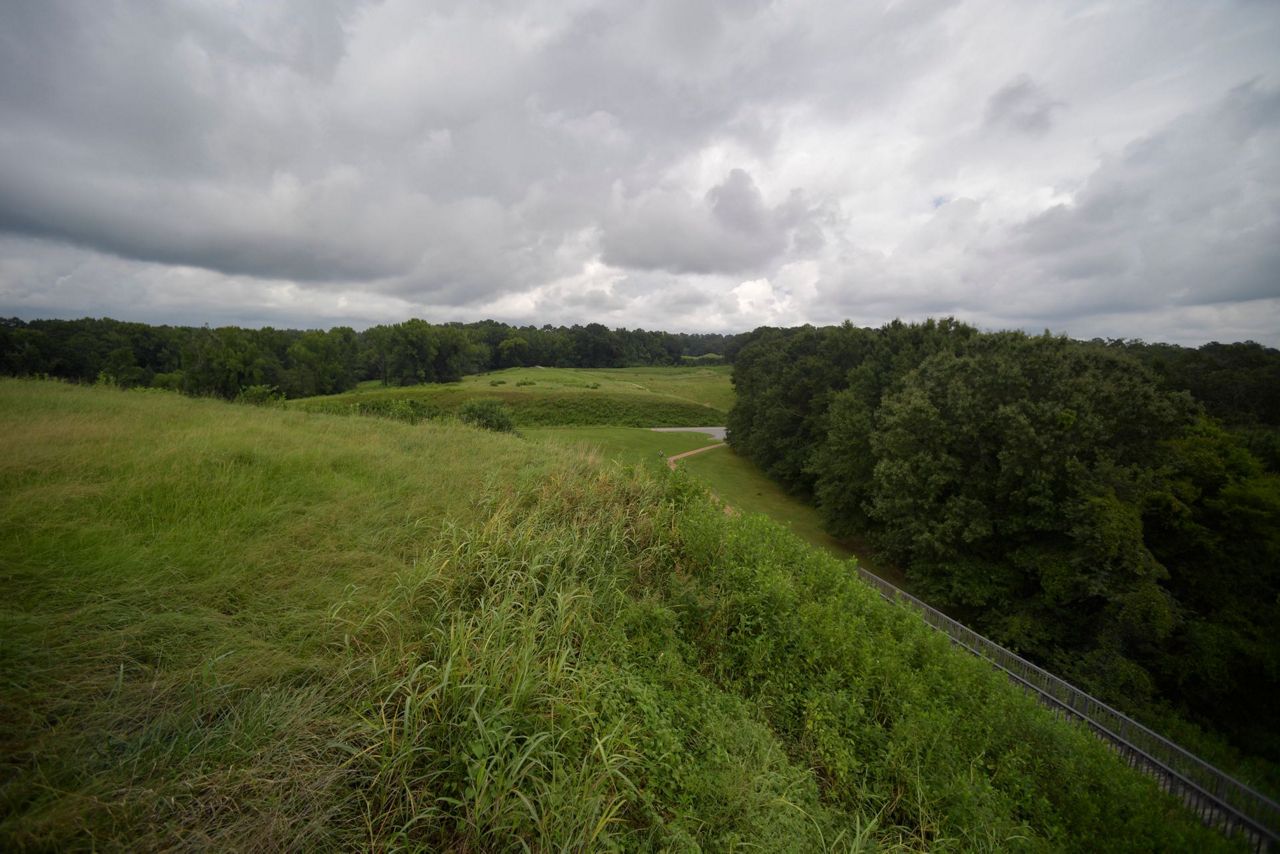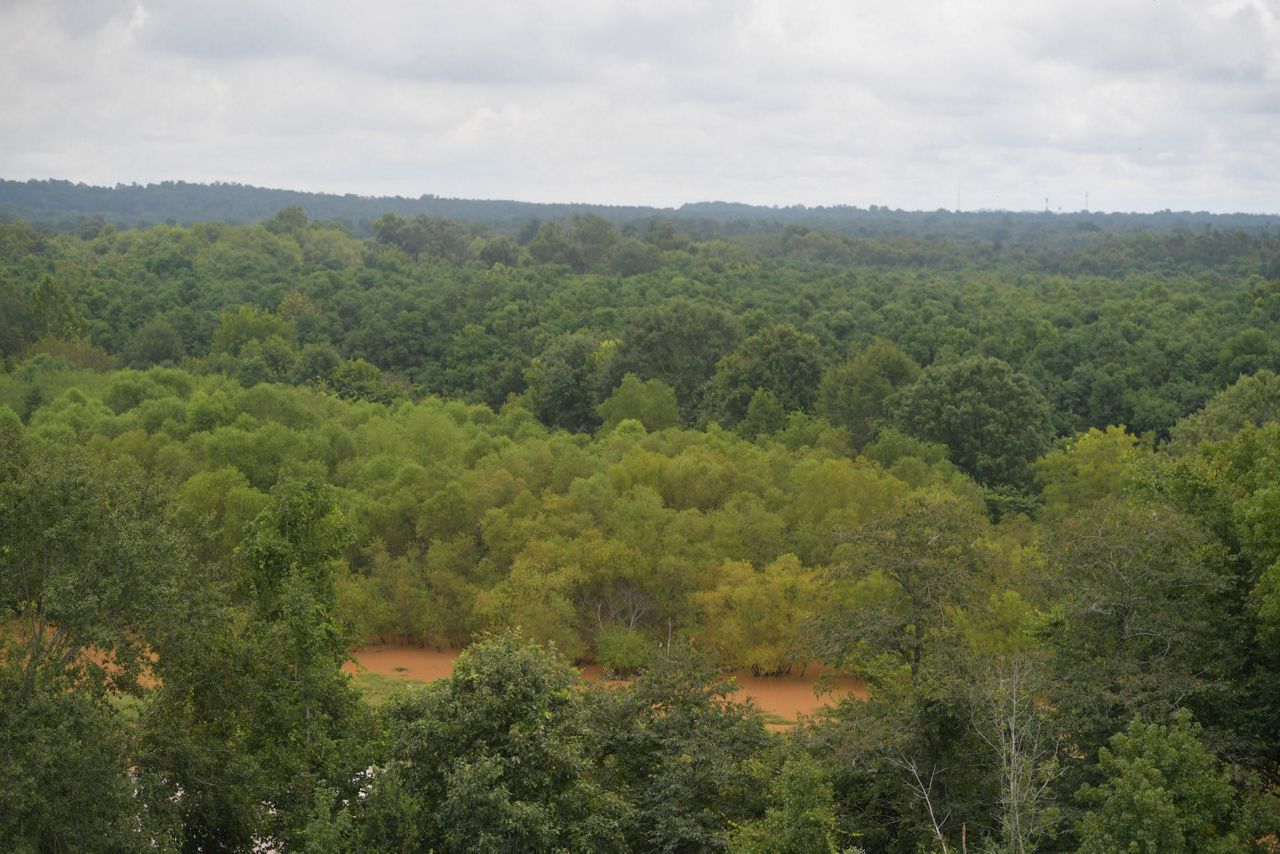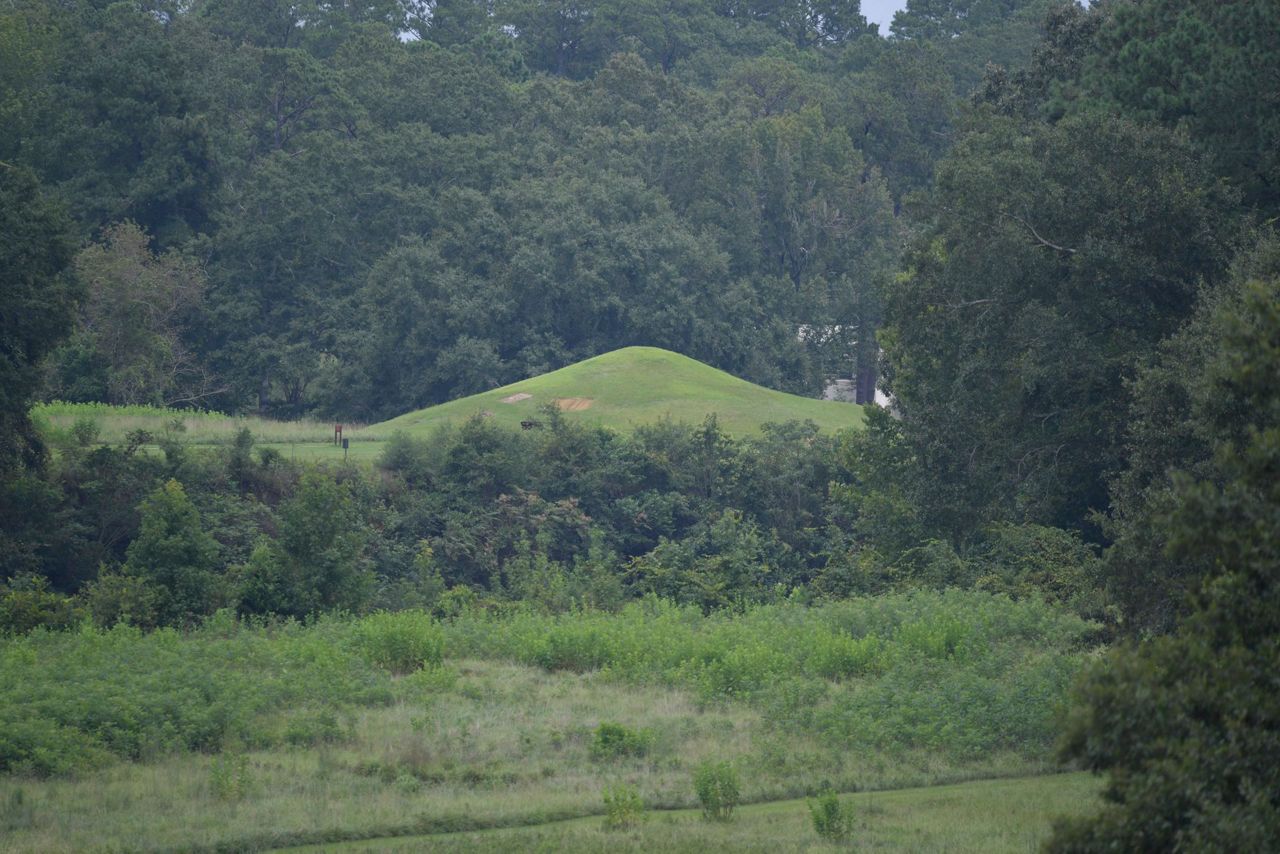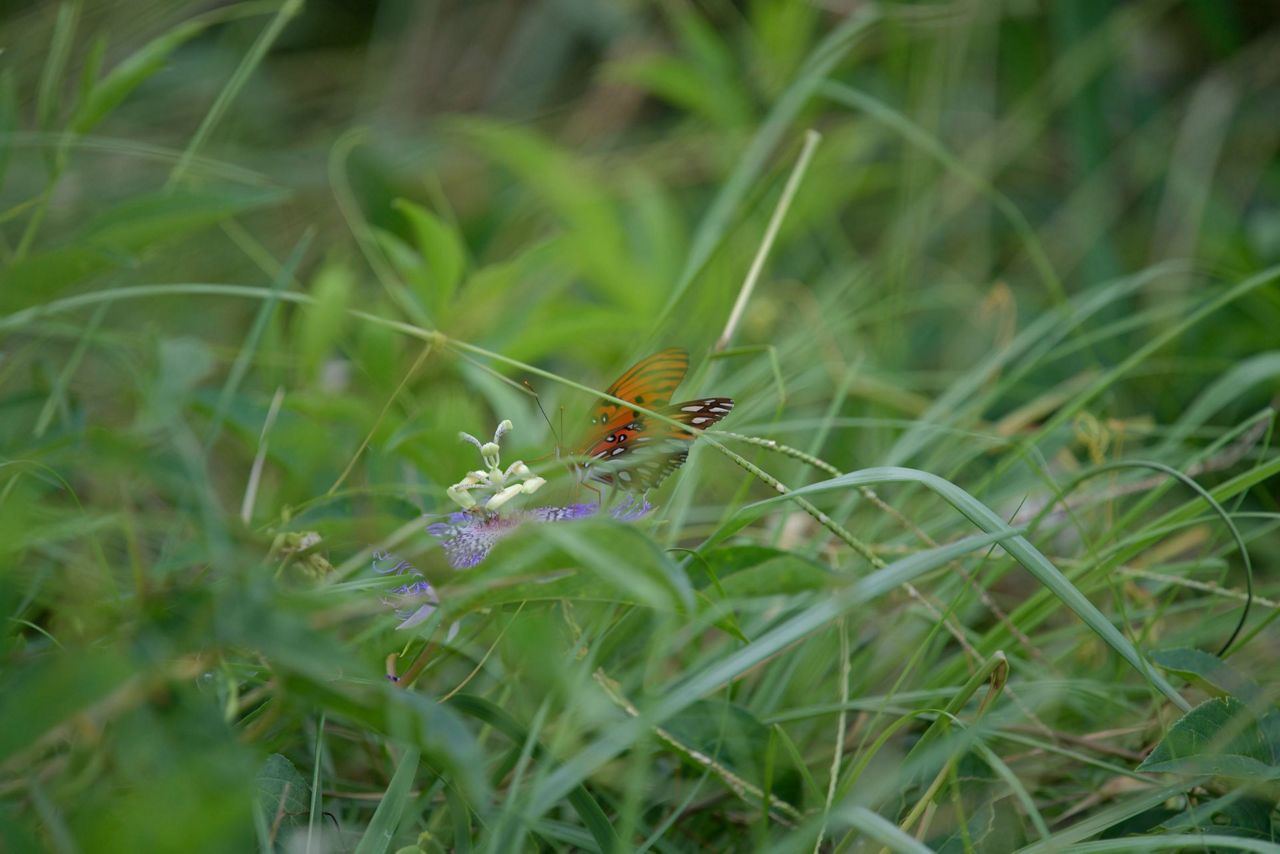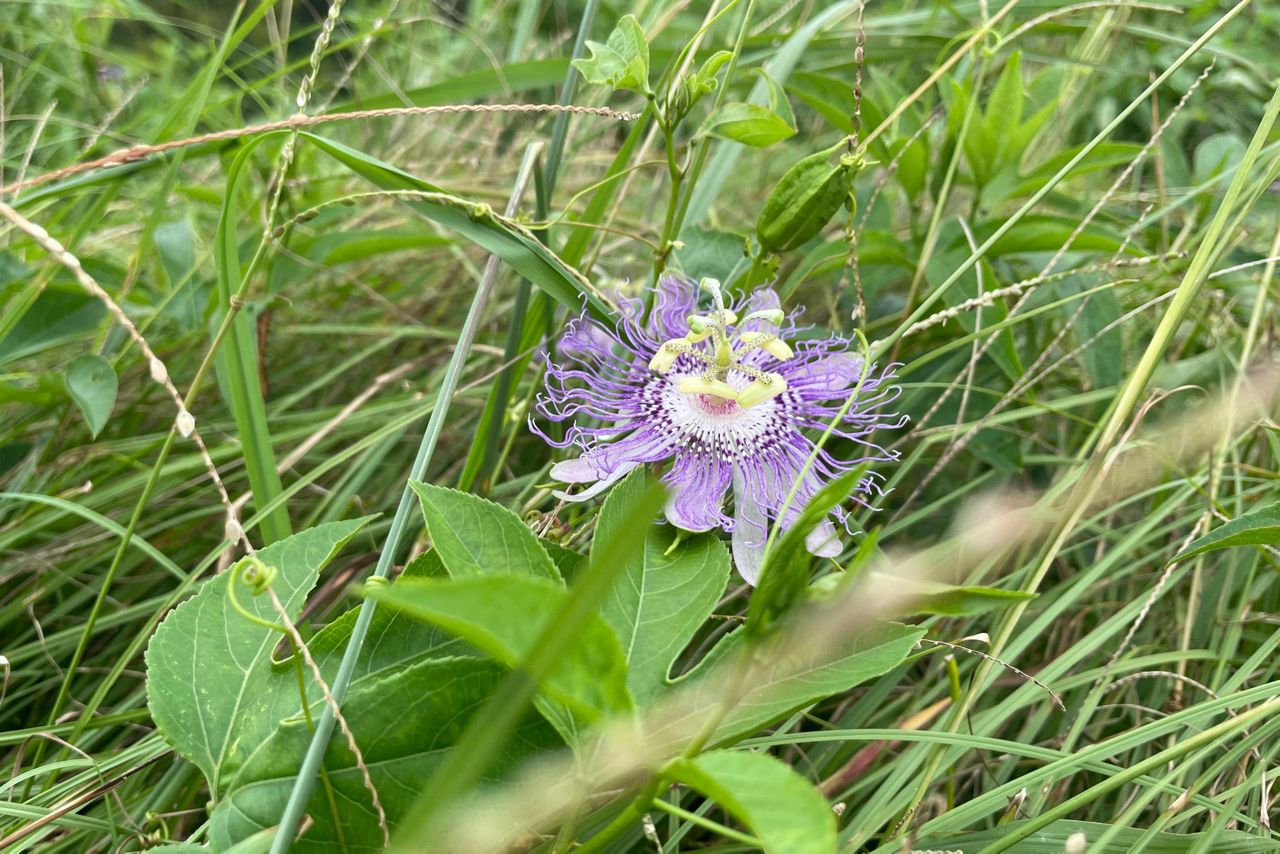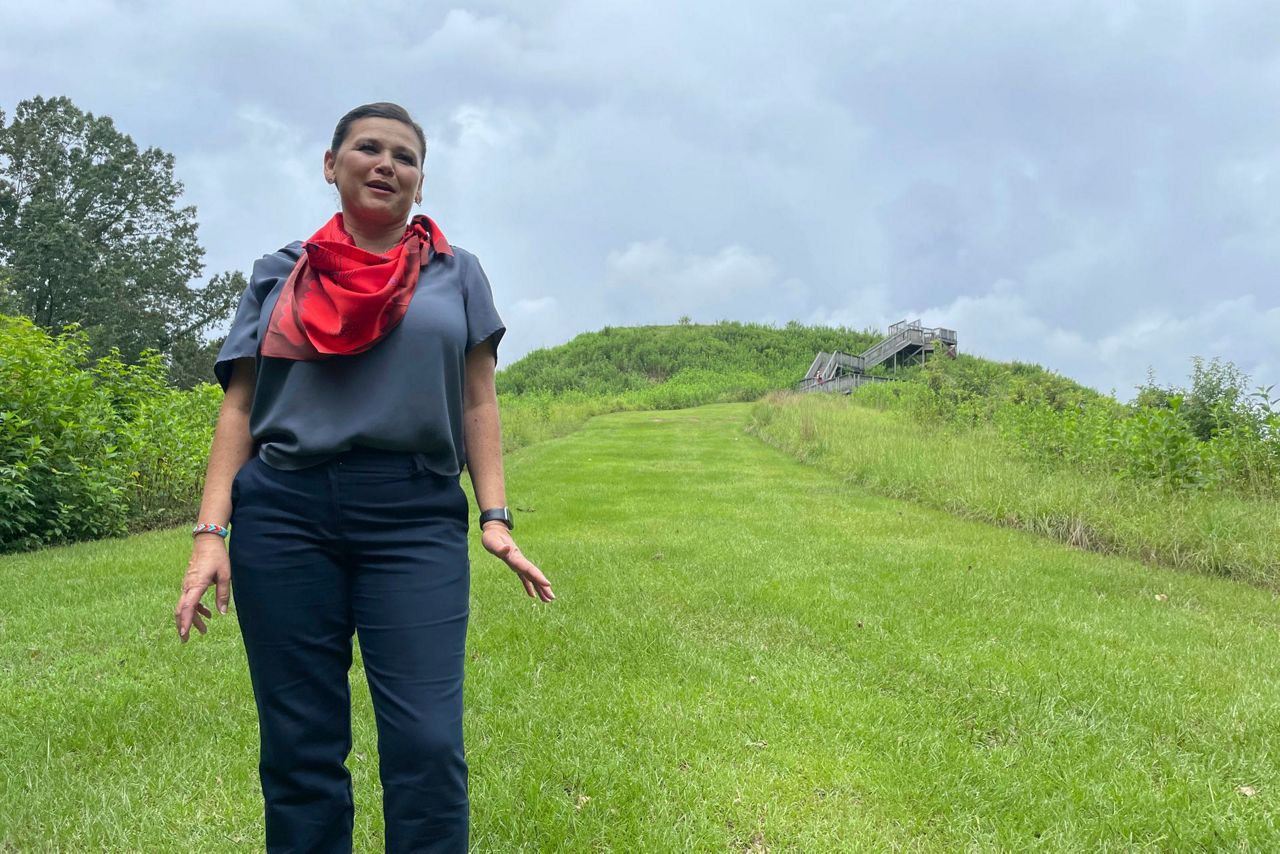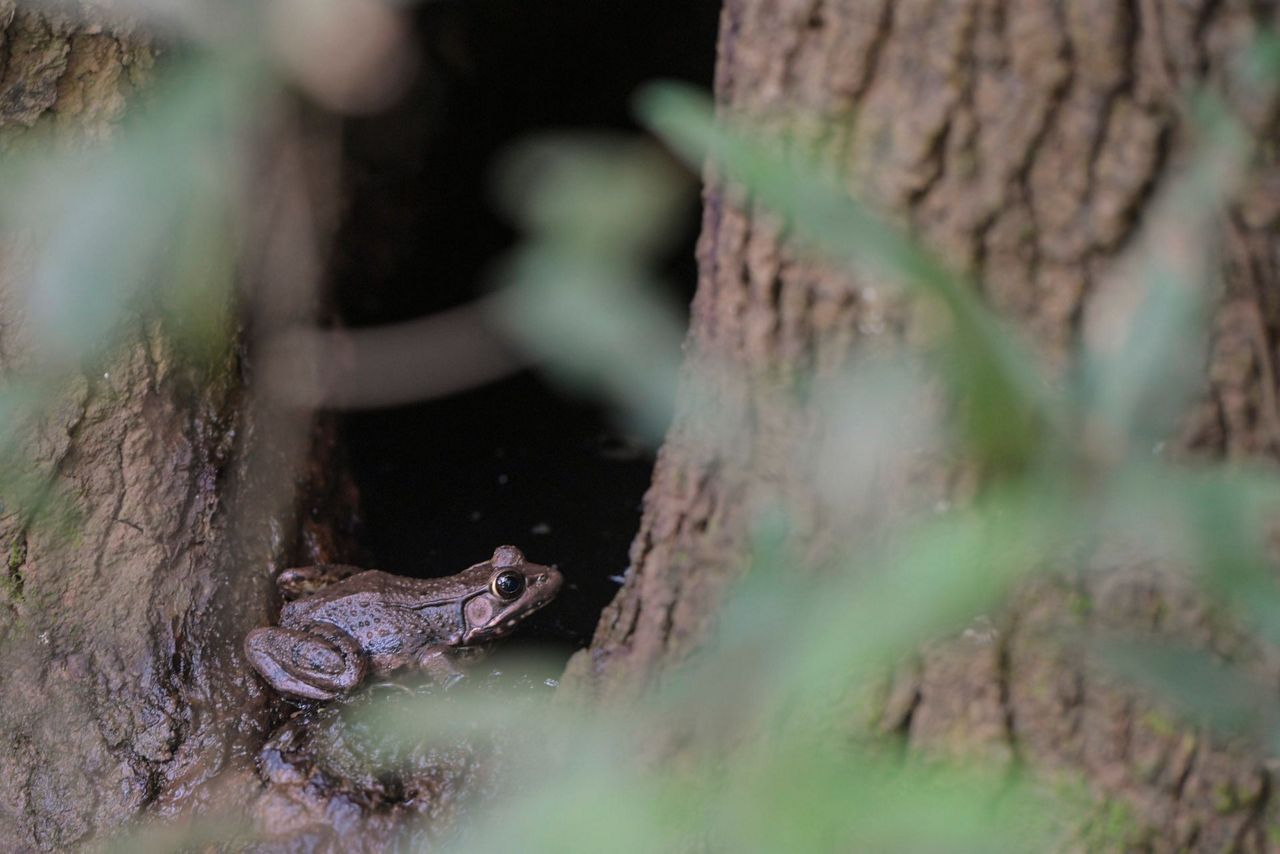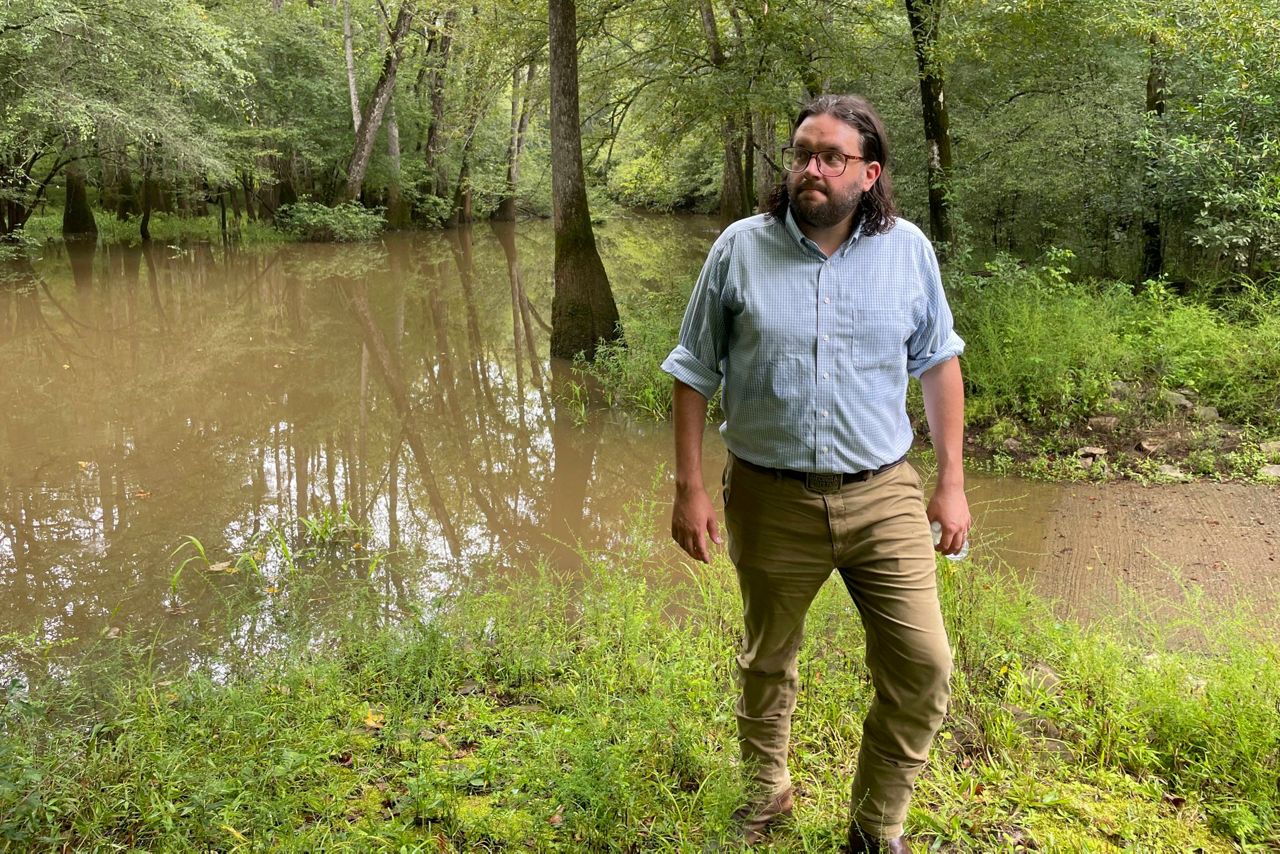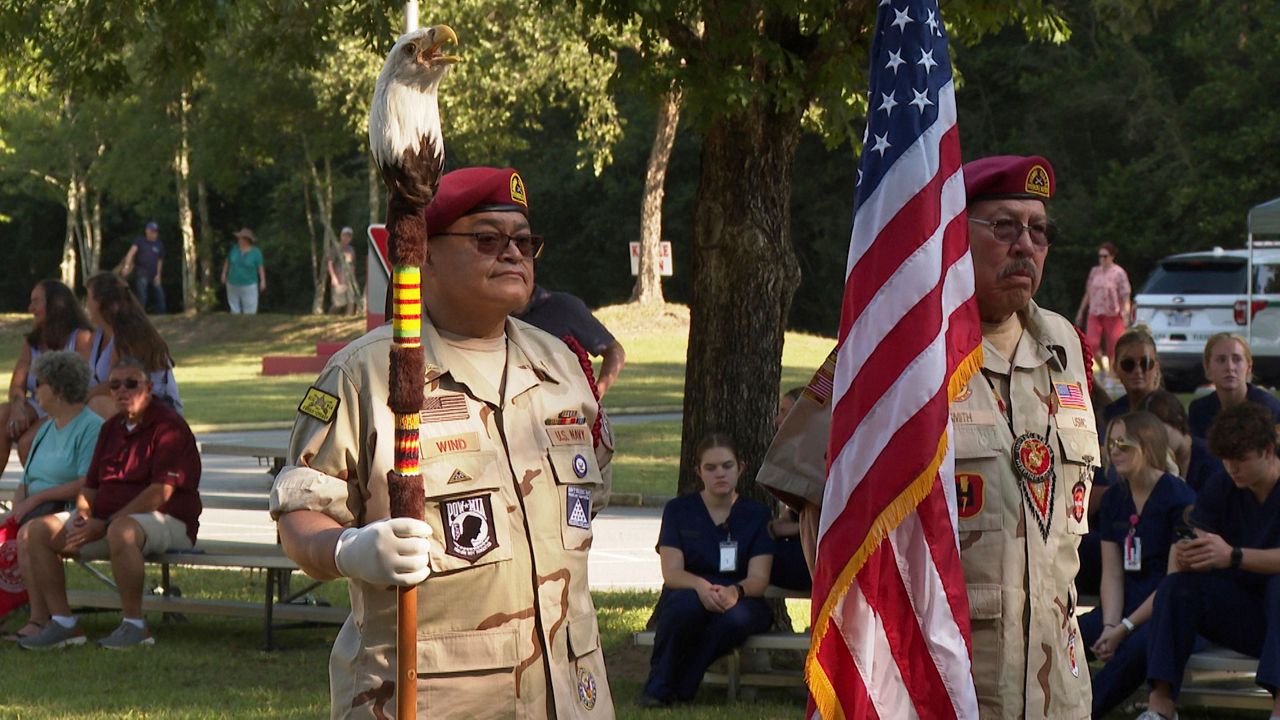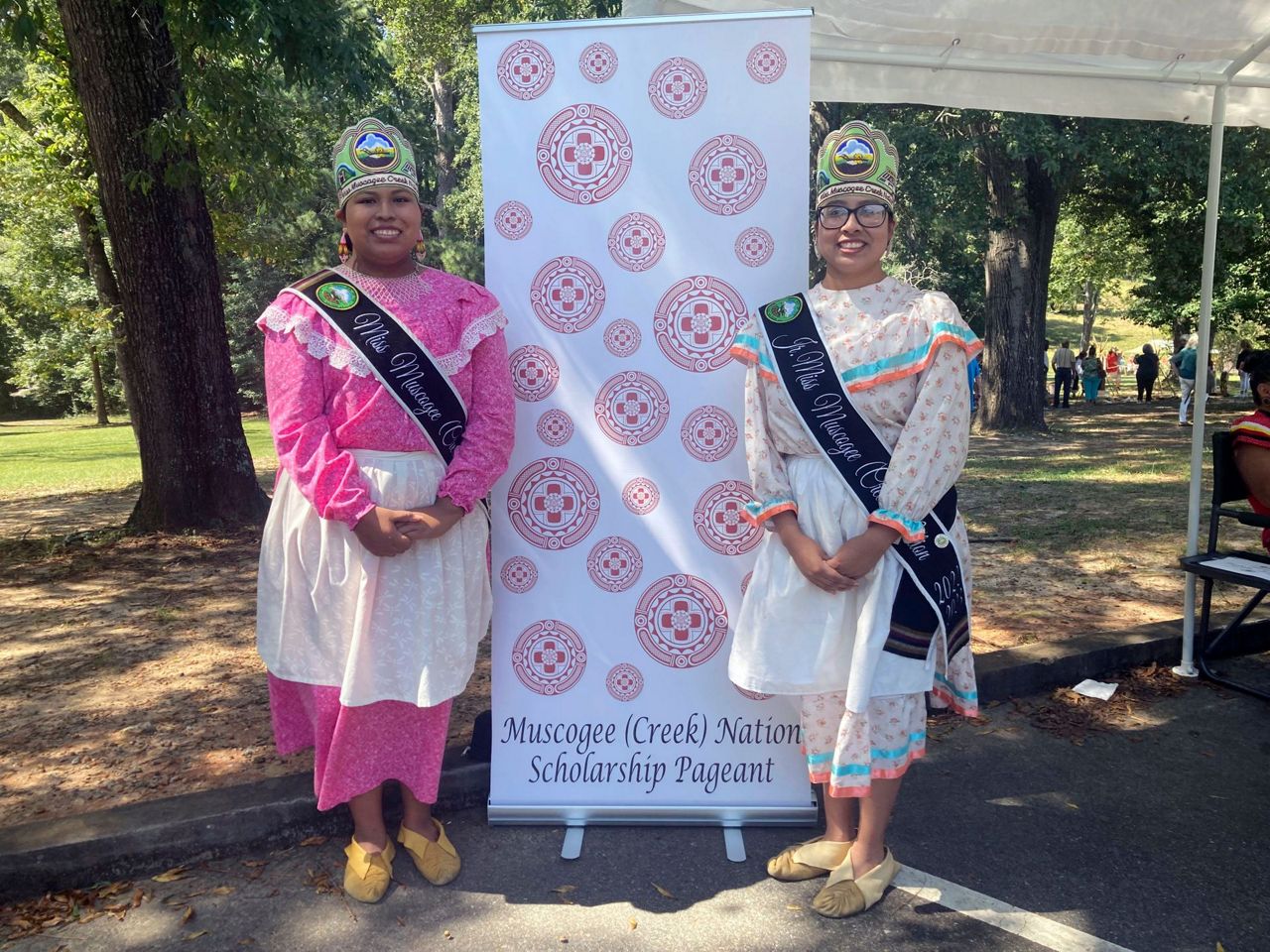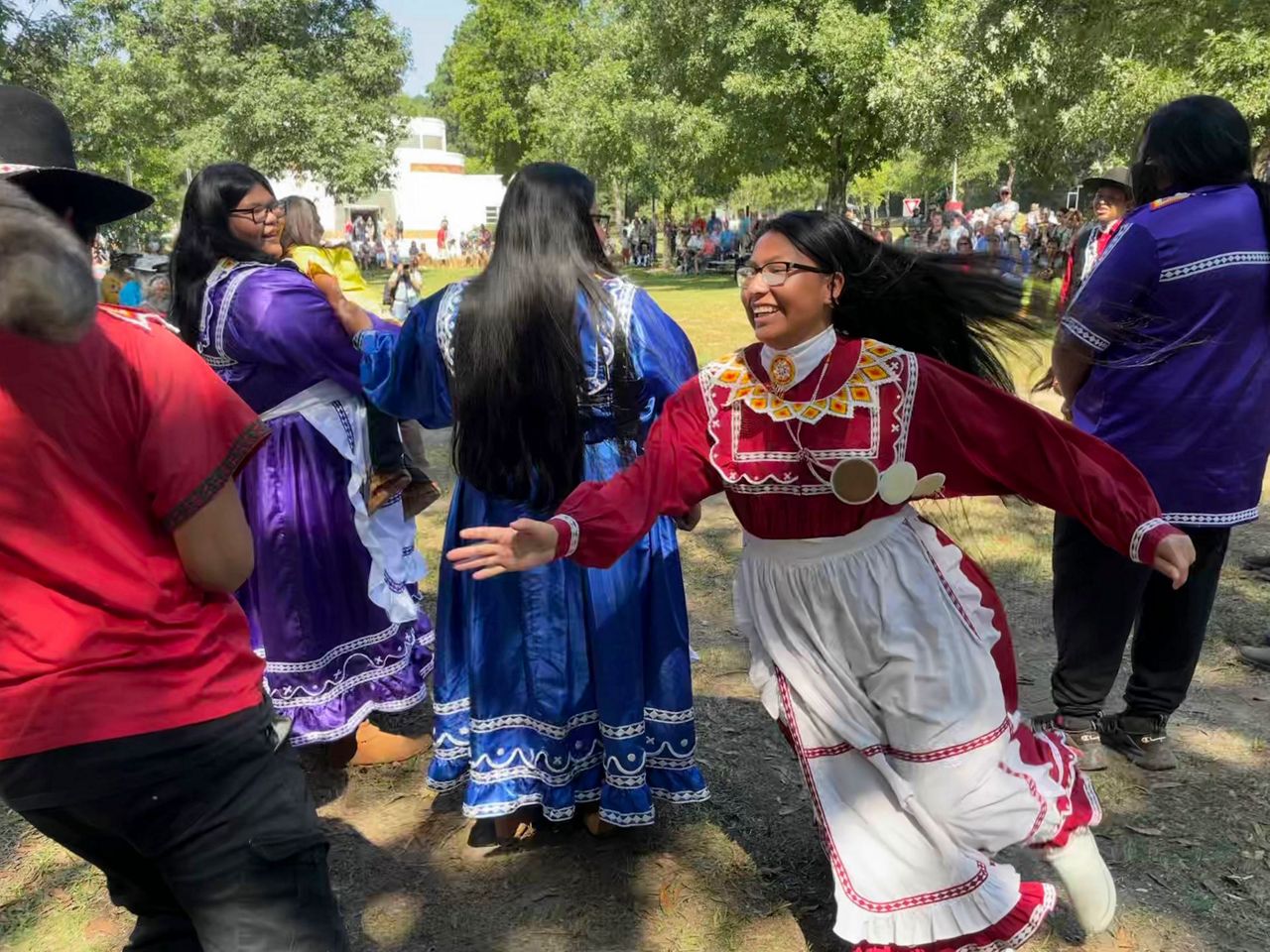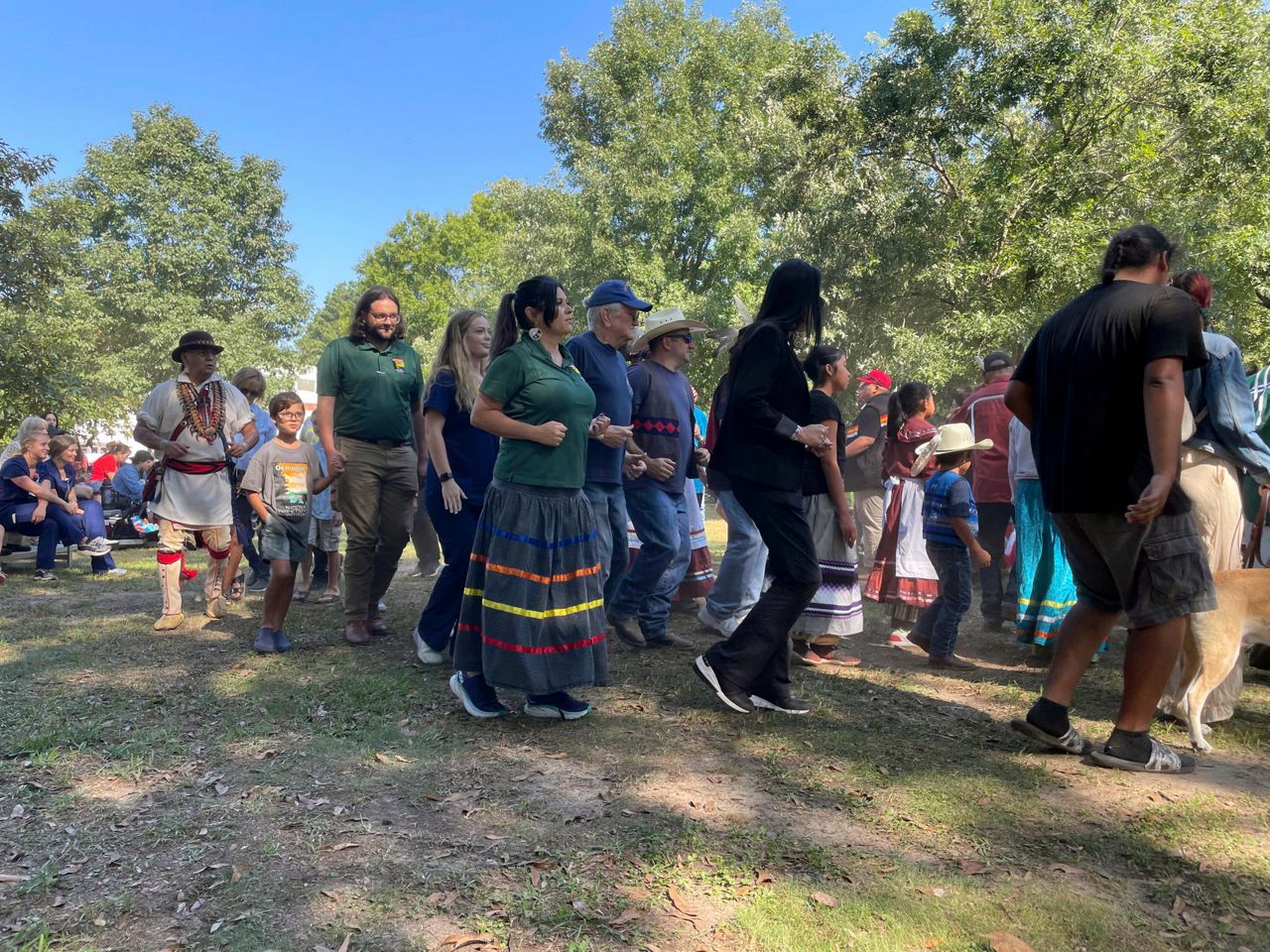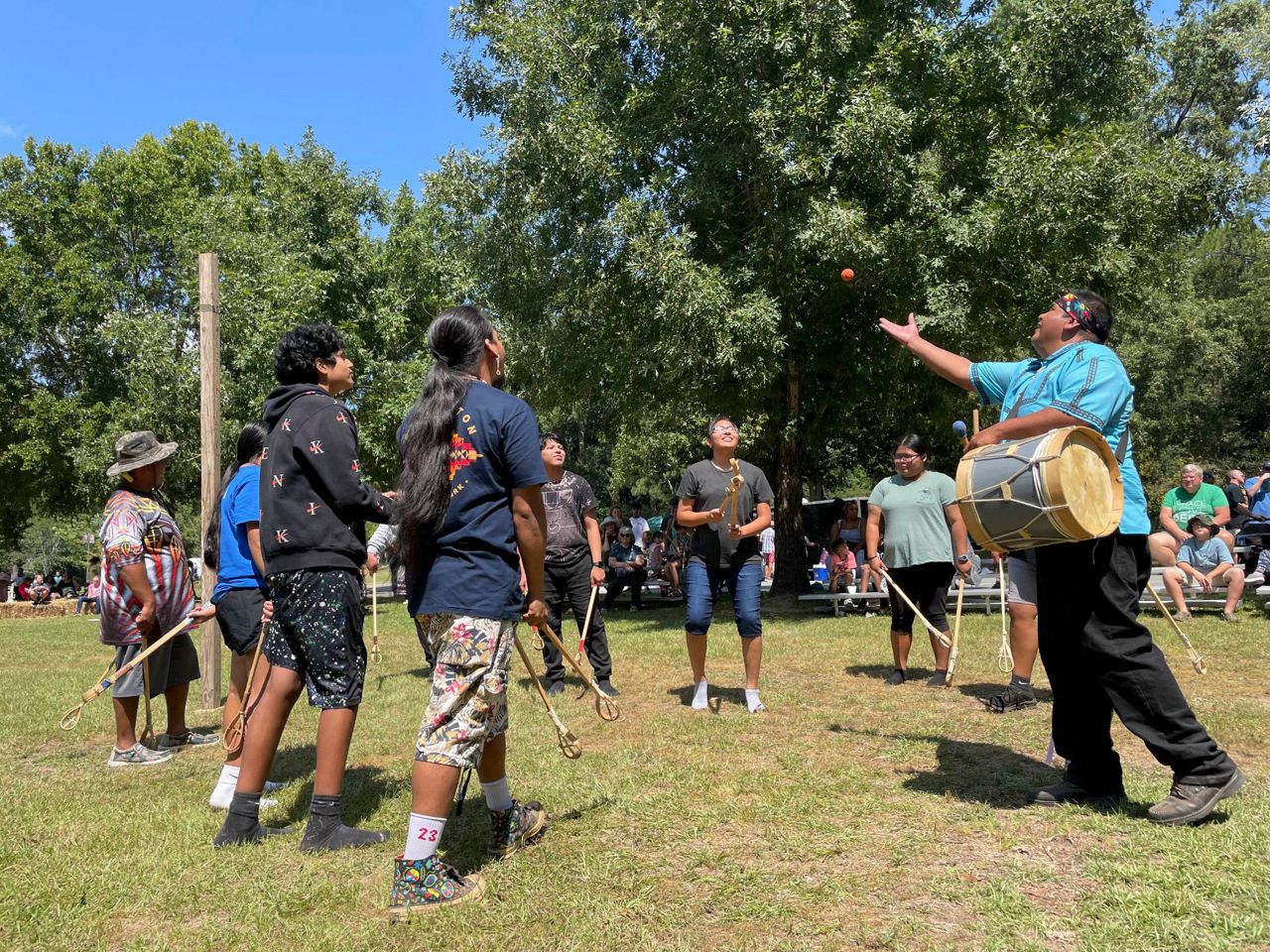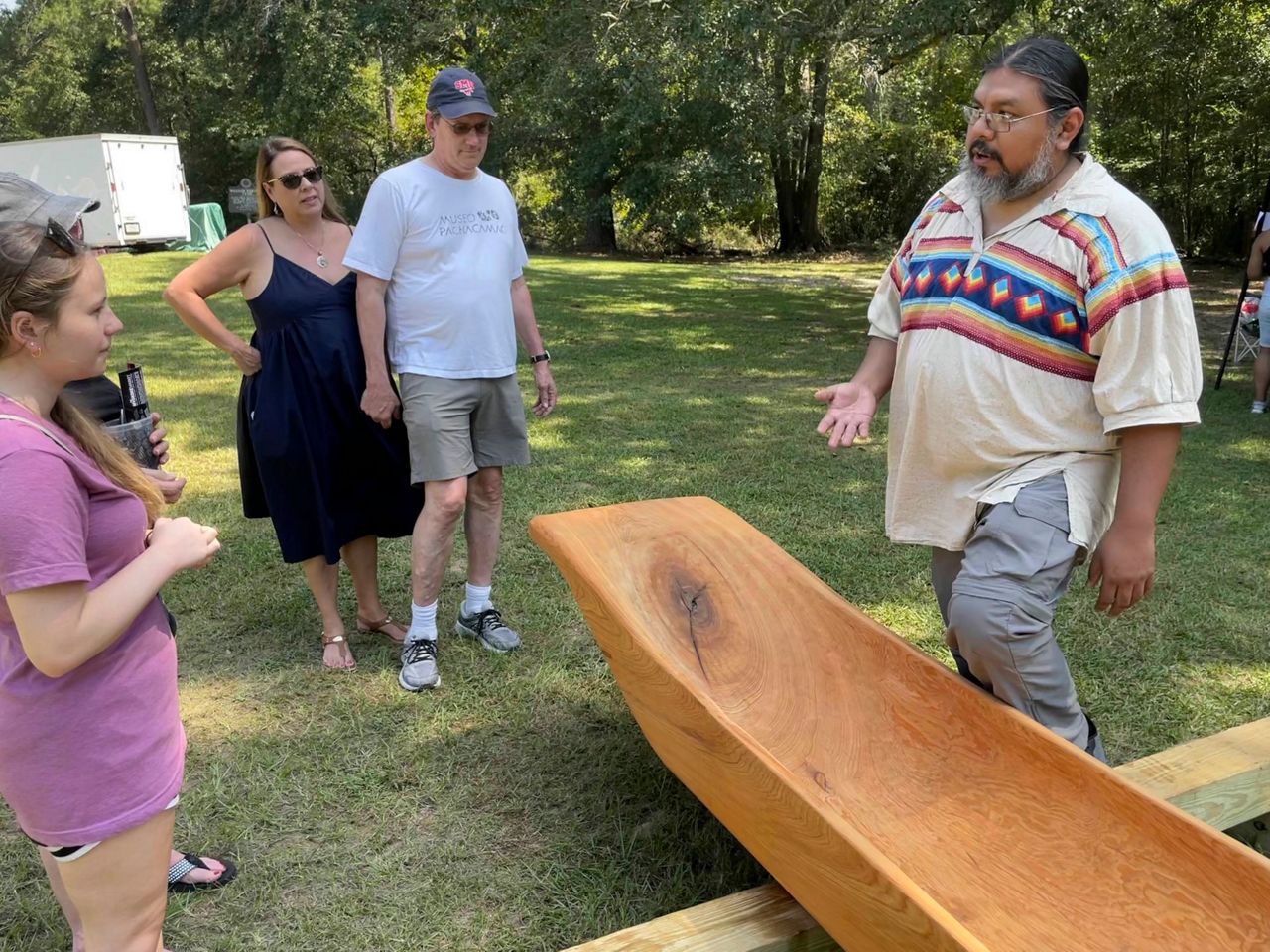MACON, Ga. (AP) — When Tracie Revis climbs the Great Temple Mound, rising nine stories above the Ocmulgee River in the center of present-day Georgia, she walks in the steps of her Muscogean ancestors who were forcibly removed to Oklahoma 200 years ago.
“This is lush, gorgeous land. The rivers are gorgeous here,” Revis said recently as she gazed over the forest canopy to a distant green horizon, broken only by Macon’s skyline, just across the water. “We believe that those ancestors are still here, their songs are still here, their words are still here, their tears are still here. And so we speak to them. You know, we still honor those that have passed on.”
If approved by Congress after a three-year federal review wraps up this fall, the mounds in Macon would serve as the gateway to a new Ocmulgee National Park and Preserve, protecting 54 river-miles of floodplain where nearly 900 more sites of cultural or historic significance have been identified.
Efforts to expand an existing historical park at the mounds site are in keeping with Interior Secretary Deb Haaland's “Tribal Homelands Initiative," which supports fundraising to buy land and requires federal managers to seek out indigenous knowledge about resources.
“This kind of land acquisition represents the best of what our conservation efforts should look like: collaborative, inclusive, locally led, and in support of the priorities of our country’s tribal nations,” Haaland said at last weekend's 30th Annual Ocmulgee Indigenous Celebration.
In an era when some culture warriors see government as the enemy, years of coalition-building have eliminated any significant opposition to federal management in the reliably Republican center of a long-red state. Hunting will still be allowed, even encouraged to keep feral hogs from destroying the ecosystem. Georgia’s congressional delegation is on board, and the Muscogee (Creek) Nation has been welcomed as an essential partner.
“Our voice, our say has been all over this whole process for a while now,” said Revis, a Muscogee and Yuchi lawyer who moved to Georgia this year to join Seth Clark, mayor pro-tem of Macon, in advocating to give the National Park Service primary authority over the heart of her people's ancestral land, which once stretched across Georgia, South Carolina, Florida and Alabama.
Unifying a patchwork of state and federally managed lands could help draw a million more visitors each year, spending a collective $187 million while hiking, canoeing, hunting, fishing and learning about Native American history, and generating $30 million in taxes while sustaining 3,000 more jobs, an economic impact study found.
“It’s a game changer for this region,” Clark said. “Reimagining our economic vitality through a sense of ecotourism is something that I just think is huge for this community.”
Gliding over the surface of the Ocmulgee, kayakers can see nothing but woodlands and wildlife, interrupted very occasionally by a bridge. Few know that 14 more ceremonial mounds, unexplored and vulnerable, rise from the swamps nearby.
Plans call for leaving the wilderness as untouched as possible while also building trails and access ramps. No land would be taken through eminent domain. Instead, park service oversight would facilitate raising money to expand the boundaries and increase public hunting areas by purchasing private wetlands from willing sellers.
The tribal government in Okmulgee, Oklahoma, also bought 130 acres (52.6 hectares) of bottomland to be surrounded by the park. Principal Chief David Hill said there are no plans to develop it — they want it preserved so that their 97,000 citizens always have a place of their own in the cradle of their culture.
“Our history is here. Our ancestors are here. Our stories started here. And we are committed to ensuring that this cherished site is protected,” Hill said.
Muscogean people say that history is fraught with trauma, but also pride at how they're thriving now after surviving the Road to Misery, their phrase for the Trail of Tears. The forced march ordered by Congress removed 80,000 Native Americans from the eastern United States. Many died of illness, starvation or abuse as the federal government broke its promises to care for them in exchange for their lands.
White settlers had made their lives unbearable through relentless campaigns of “expulsion or extermination” in the 1820s and 1830s. And as soon as the Muscogee, Seminole, Cherokee, Choctaw, Chickasaw and other natives were gone from the Deep South, they were replaced by hundreds of thousands of slaves, sold down rivers by their northern owners to clear the land for cotton.
Settlers kept the place names, not knowing what they meant in Native languages.
Desecrations swiftly followed at the Ocmulgee Mounds, the spiritual, legislative and economic heart of the Creek Confederacy. Old growth trees were cleared for a slave labor camp. A massive funeral mound was blasted open for a railroad to ship cotton. Civil War battlements later carved up its fields.
About 700 acres (283 hectares) surrounding seven mounds were declared a national monument in 1936. But that did not stop archeologists from removing 2.5 million artifacts reflecting 17,000 years of continuous human habitation. Most remain unexamined in Smithsonian, park service and university archives.
For decades, the park was promoted with postcards featuring an exposed skeleton. It turned out to be the skull of one person and the bones of another, said Raelynn Butler, the tribal nation's manager of historic and cultural preservation. “They didn’t treat us like people,” she said.
The facts about genocide and survival began to resurface in the 1970s when Revis' aunt Addie and other tribal elders traveled back to Georgia to lead cultural discussions. “That was really where the first idea of the celebration came from — that we have got to change the narrative,” Revis said.
Twenty years of painstaking collaboration enabled the tribal nation to reunite and rebury the remains of 114 people at the mounds in 2017. And this February, an adjoining 1,000 acres (404 hectares) of sacred land were protected, purchased by the federal Land and Water Conservation Fund at no cost to the taxpayers, Haaland said. Expanding this to a park and preserve could protect another 85,000 acres (34,400 hectares) downriver.
“We get questioned all the time, ‘this is such a beautiful place, why’d you all leave?' We weren't asked to - we were forced to," Hill said. “And that’s what we want to prevent in the future — the things we do now, it's for our future generations. I don’t want them to go through that. So Oklahoma is home, but this is still our original home.”
___
Michael Warren is a member of the AP’s Race and Ethnicity Team.
Copyright 2022 The Associated Press. All rights reserved. This material may not be published, broadcast, rewritten or redistributed without permission.




